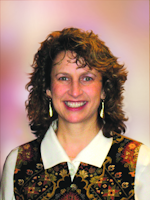BURLINGTON, VT--In a trend that illustrates “a healthy sign for the future,” Dennis Matthews, director of the National Science Foundation-sponsored Center for Biophotonics Science and Technology (CBST) at the University of California, Davis (Sacramento, CA) noted that “hundreds of new biophotonics companies are appearing and being acquired seemingly overnight.”
Matthews made his comments during the Advances in Optics for Biotechnology, Medicine and Surgery XI conference (June 28-July 2), which featured a special session to provide an industry perspective on the commercialization and marketing of clinical devices and systems. Matthews organized, hosted, and introduced the session, which included speakers representing a nucleic acid testing technology startup (“Commercializing a molecular diagnostic instrument” by Bill Colston of QuantaLife), and a strategy and management consultancy focused on new technologies in the life sciences (“Emerging medical device technologies: The road from bench to commercialization” by Babak Nemati of Strategic Intelligence).
Matthews’ introduction included a discussion of the size of the biophotonics market and its segments. Research performed as a class project by UCD Graduate School of Management (and published by the German publication Optik & Photonik in June 2007) sized the overall market at $53 billion per year worldwide, he reported. The study broke that figure down into four segments: Medical diagnostics (in vitro diagnostics, imaging, “optical biopsies”, etc.) at $37 billion, medical therapeutics (surgical equipment, photodynamic and low-level-laser therapy instruments, and UV illuminators for instance) at $8 billion, tests and components (e.g. optical instruments, molecular biology, and probes) at $7 billion, and non-medical applications (such as biometric devices and UV sterilization equipment) at $1 billion.
Trends and capabilities
Based on CBST’s work to understand the needs of medical practitioners, Matthews reported that among the unmet needs biophotonics technologies are positioned to address with clinical devices and systems include image-guided surgery, especially tumor margin characterization (ideally, he said, such systems would be “cheap, small and easy to use”; point-of-care (POC) diagnostics for clinics, hospitals and rural/pandemic medicine; clinical or field-portable imaging systems; precision surgery tools; tissue viability monitors; infectious disease tracking systems; compliance monitoring systems to determine whether patients are taking prescribed medicines; and wellness monitoring. But, he advised, “The list goes on and on.”
And then, with the caveat that “I am better at attempting to create the future than predicting it,” Matthews went on to outline some future directions in biophotonics. His list organized technologies under three major headings, and included some he’d presented as unmet needs:
Microscopic imaging systems--for instance, systems to explore viral and bacterial dynamics label-free and enable in vitro imaging of protein complexes.
Sensors, assays and probes--including optofluidic lab-on-a-chip devices and other POC technologies, highly targeted nanoparticle probes, Raman flow cytometers, personal health monitors housed in “carebots” (robots designed specifically for healthcare), and high-speed wide field array readers.
Clinical diagnostic and therapy systems--devices for real-time pharmaco-kinetics; radiation, viral, bacterial biodosimeters; monitors to measure therapeutic response; stem cell identification and tracking; and self-reporting in vivo “nanoclinics.” He also included some he reported earlier as unmet needs: POC devices for diagnosis and staging; systems for image-guided micro/nano surgery; and technologies for noninvasive treatment of cancer and other diseases.
Matthews also noted that digital medicine is poised to explode, and that digital pathology in particular is critical for speeding medical diagnostics and spreading quality health care throughout the world. Among news trends, Matthews said that “nanobiophotonics as a segment of nanotech is projected to have an enormous growth rate: 20X to 30X in five years.” He also said that while growth of the many biophotonics-based “theranostics” companies is unsure due to lack of buy-in from pharmaceutical companies and venture capitalists, that situation is likely to change.
Within the larger context
Although Nemati’s (Strategic Intelligence) presentation focused on the broad medical device market, he noted that photonics play in all sectors as “subcomponents” of such systems. He pointed to the cardiology market as a key driver in this vast arena (having accounted for 6.9% of the worldwide medical device sales in 2002 according to Standard & Poor’s) and said that its “growth will be fueled by innovative new technologies.”
Other key segments, he said, are general surgery, orthopedics, and ophthalmology. And among new and emerging segments are obesity, interventional pulmonology and neurology, and implants (sensors) for patient monitoring.
Focusing specifically on diagnostics systems, QuantaLife’s Colston identified five market drivers: simplicity; cost (inexpensive tools are needed for infectious disease screening, for example); the ability to enable POC decision making; increased accuracy; and multiplexing (enabling more measurements per dollar).

Barbara Gefvert | Editor-in-Chief, BioOptics World (2008-2020)
Barbara G. Gefvert has been a science and technology editor and writer since 1987, and served as editor in chief on multiple publications, including Sensors magazine for nearly a decade.